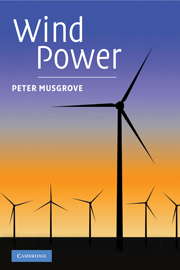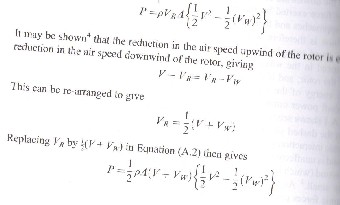Review of Wind Power Peter Musgrove
Review Of Wind Power Peter Musgrove
A review of Wind Power by Peter Musgrove - Cambridge University Press
home > wind | shopping
Wind Power by Peter Musgrove
Wind Power is a new (Feb 2010) 300+ page book published by Cambridge University Press which promises to look at the exponential growth of wind power since the 1990's and its future; the costs of wind energy generated electricity compared to electricity generated by burning fossil fuels; how wind turbines work; and why the oft stated disadvantage of wind power (variability/intermittency - i.e. hours or days with no wind) do not prevent its large scale use.Table of Contents
PrefaceAcknowledgements
1. Wind power and our energy needs - an overview
2. The first windmills
3. Seven centuries of service
4. Generating electricity - the experimental years, 1887 to 1973
5. Evolution of the modern wind turbine, 1973 to 1990
6. Progress and economics in Europe, 1973 to 1990
7. UK progress, 1973 to 1990
8. Development and deployment, 1990 to 2008
9. The future: from marginal to mainstream
Appendix 1. The power output from wind turbines
Appendix 2. The performance of traditional windmills
Appendix 3. Wind characteristics
Notes to chapters
Notes to Appendices
References
Index
Review of Wind Power
Chapters 2 to 8 inclusive (pages 15 to 208) of this book give a detailed history of wind power around the world from the Roman era and early Persian windmills used to turn millstones, to the vast offshore electricity generating wind farms of today. While well written and researched, to most people this history may be of purely academic interest.Chapter 1 and chapter 9 in particular are likely to be of much more general interest since it is here that key questions are answered about the financial costs of wind power including comparisons with fossil fuels, the comparison between wind and nuclear as the better low carbon option of the future, and the potential growth of wind power around the world in the next decade and beyond.
For anyone interested in learning exactly how wind turbines actually work Appendices A, B and C will be of interest, but note that quite complex information is presented at a level similar to that of an undergraduate engineering course rather than being written for readers who are not from a technical background.

The 50+ pages of notes are very detailed, and the removal of the contained information from the main text makes the book very readable and accessible. There are also 10+ pages of references including quite a few online resources - downloadable PDFs and so on which will be of interest to anyone looking for a bit more depth of information.
There is a still a shortage of general books covering the history, technology, politics, costs, potential growth, and future etc of wind power so this book will be a welcome addition to the bookshelf of anyone interested in the subject matter. However, the book would have been more successful if the material in chapters 1 and 9 had been expanded upon (either in addition or at the expense of some of the history), and if the material in the appendices had been presented to make it more understandable to the layman.
In Appendix A for example, in just six pages the power output of wind turbines, the Betz Limit, efficiency, rotor drag, and the effect of the number of blades are all covered. Appendix B on the other hand dedicates 14 pages (more than double the length of Appendix A) to the performance of traditional windmills - a subject of far less interest or use to the vast majority of readers. Appendix 3 then dedicates just three pages to the very important topics of wind speed variation with height and wind speed distribution.
In conclusion we would certainly recommend this book to anyone with an interest in wind power - particularly anyone looking for jobs in renewable energy or studying or planning to study for a degree in renewable energy. For anyone considering putting up a wind turbine in their garden for example, as it currently stands, this is probably not the book for you which is a pity, but hopefully the second edition will offer a little more to the non-academic non-professional wind power enthusiast.
About the Author Peter Musgrove
While an engineering lecturer at the University of Reading, Peter Musgrove was one of the key individuals involved in the formation of the British Wind Energy Association (BWEA), now known as renewableUK, in 1978, and he was its first chairman. Leaving academia in 1988 for industry, he was Head of Development for National Wind Power (NWP) throughout the 1990's. When he retired in 2003 he was given the first BWEA Lifetime Achievement Award.Buy Wind Power by Peter Musgrove
Wind Power is available in both hardback and paperback editions. Click below for more information and to purchase your choice of edition with free delivery and usually at a discount on the reccommended retail price). Wind Power paperback edition (ISBN: 0521747635, RRP £19.99 / US$34.99), Wind Power hardback edition (ISBN: 0521762383, RRP £55 / US$95).Comment on this Article
If you have any comments on this article, please email them to neil@reuk.co.uk.Related Articles
Click one of the links below for further articles on the following relevant topics:wind, shopping.